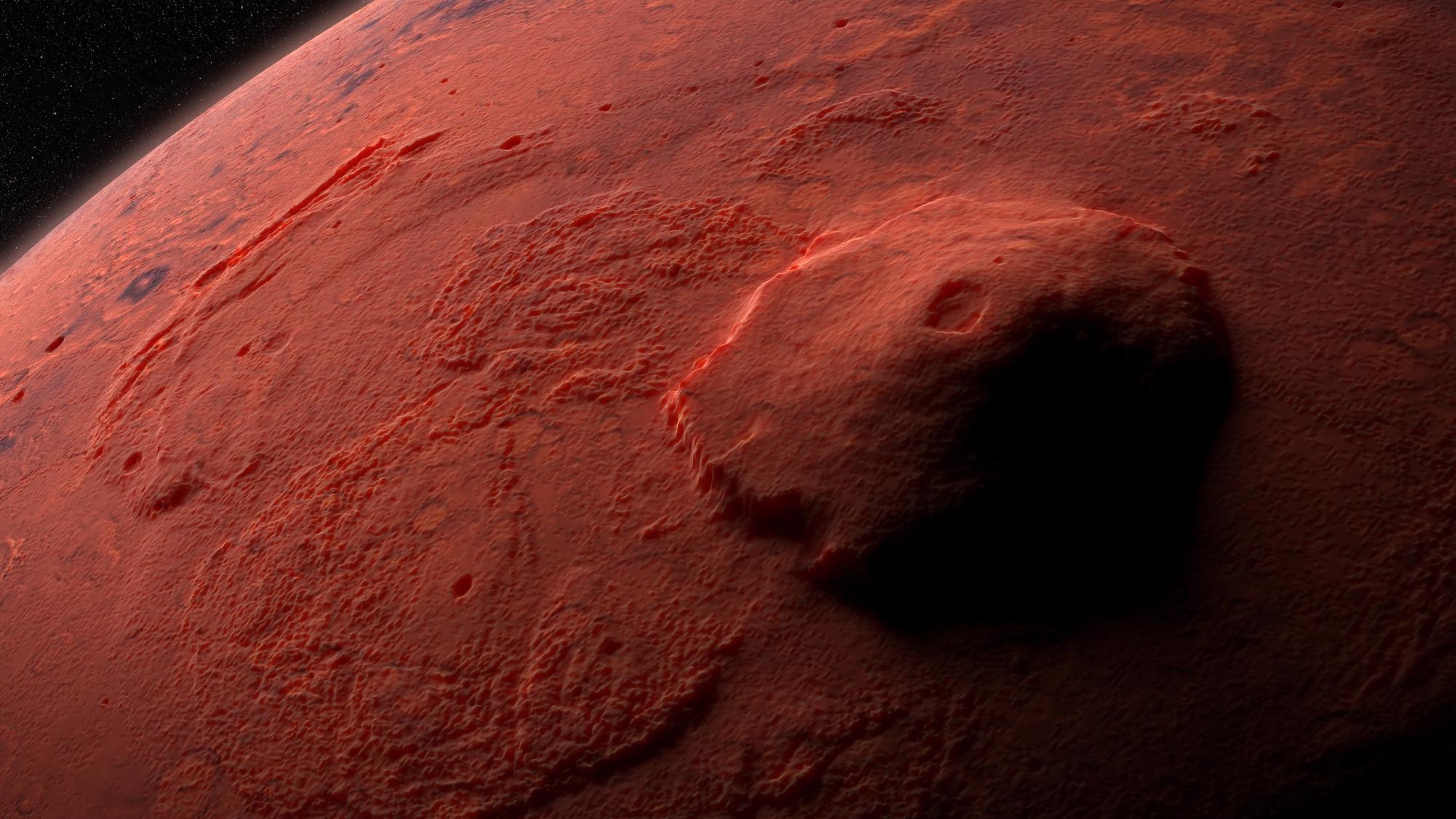
Image Credit: Shutterstock.com / Dotted Yeti
New research reveals that active volcanoes on Mars were not restricted to the planet’s distant history as previously believed.
Astronomers have been aware for some time that in its past Mars was volcanically actively. In fact, one of the red Planet’s most striking features is the long-dormant 14-mile tall volcano, Olympus Mons. This activity has always been believed to have occurred in our neighbor planet’s very distant past.
New research could be about to change that assumption, however, showing that the volcanoes of Mars could have been active as recently as 50,000 years ago.
Using data collected by satellites orbiting the Red Planet a team of scientists found signs of a violent eruption in the Elysium Planitia region of Mars, which straddles the planet’s equator. This is also the location of two recently detected ‘marsquakes.’
Most volcanic activity on Mars is believed to have occurred between 2 and 3 billion years ago, with small eruptions in isolated locations dated at around 3 million years old.
“This may be the youngest volcanic deposit yet documented on Mars. If we were to compress Mars’s geologic history into a single day, this would have occurred in the very last second,” says Dr. David Horvath, of the Planetary Science Institute.
This means this latest finding is the youngest geological evidence of volcanic activity ever found on the planet, it could also imply that the planet is still active volcanically.
Whilst this is news that is exciting enough in itself, young volcanic activity suggests that near-surface areas of Mars could have supported life in its recent history.
The interaction of ascending magma and the icy substrate of the Cerberus Fossae could have provided favorable conditions for microbial life fairly recently and raises the possibility of extant life in this region.
Dr. David Horvath, the Planetary Science Institute
Horvath, a specialist in the climate, geology, and geomorphology of bodies in the solar system including Mars, is the author of a paper discussing the findings published in the latest edition of the journal Icarus¹.
A New and Different Kind of Volcanism
Horvath, who worked on the study whilst he was a postdoctoral researcher at the University of Arizona’s Lunar and Planetary Lab, describes the evidence of volcanic activity investigated by his team as a dark deposit, covering an area slightly larger than Washington, D.C. It has high thermal inertia — a measure that indicates how slowly the temperature of a body reaches the temperatures of its surroundings.
Horvath also says that the deposit includes high‑calcium pyroxene-rich material, and it is distributed symmetrically around a segment of the Cerberus Fossae fissure system in Elysium Planitia, a feature that is not typical of the wind-driven deposits common to the region.
“This feature is similar to dark spots on the Moon and Mercury suggested to be explosive volcanic eruptions,” says the researcher whose recent work has included modeling the climate and geology of early Mars.
Whilst the majority of volcanic activity on the Red Planet and particularly in the region of the Elysium Planitia is characterized by surface lava flows, there is evidence on the Red Planet of explosive volcanism. But, the deposit studied by Horvath appears to be distinct from previous examples.
This feature overlies the surrounding lava flows and appears to be a relatively fresh deposit of ash and rock, representing a different style and time period of eruption than previously identified pyroclastic features.
Dr. David Horvath, the Planetary Science Institute
InSight into an Explosive Finding
The deposit inspected by Horvath and his team suggests a most spectacular and violent eruption occurring in the recent history of Mars at the Elysium Planitia.
“This eruption could have spewed ash as high as 10 kilometers into the Martian atmosphere but likely represents the last gasp of erupted material,” Horvath explains. “Elysium Planitia hosts some of the youngest volcanism on Mars, dating around 3 million years ago, so [this finding] is not entirely unexpected.”
The location of the deposit studied by the team is only around 1600 km from NASA’s Insight lander, which since 2018² has been conducting a series of investigations into the Red Planet’s ‘vital signs.’ This includes the planet’s tectonic activity.
In 2020 InSight sent back the first evidence of ‘Marsquakes’ as part of its investigation into the Red Planet’s interior. Two of these quakes were localized to the Cerberus Fossae. This new research indicates that this tectonic activity could have been sparked by the flow of magma deep below the area.
“The young age of this deposit absolutely raises the possibility that there could still be volcanic activity on Mars and it is intriguing that recent Marsquakes detected by the InSight mission are sourced from the Cerberus Fossae,” says Horvath. “However, sustaining magma near the surface of Mars so late in Mars’s history with no associated lava flows would be difficult and thus a deeper magmatic source would likely be required to create this eruption.”
The next steps for the researchers will include attempts to find similar evidence of recent volcanic activity. “It is possible that these sorts of deposits were more common but have been eroded or buried,” Horvath concludes.
References
1. Horvath. D.G., Moitra. P., Hamilton. C. W., et al, [2021], ‘Evidence for geologically recent explosive volcanism in Elysium Planitia, Mars,’ Icarus, [https://doi.org/10.1016/j.icarus.2021.114499]
2. Golombek. M., Warner. N.H., et al, [2020], ‘Geology of the InSight landing site on Mars,’ Nature Communications, [https://doi.org/10.1038/s41467-020-14679-1]
Disclaimer: The views expressed here are those of the author expressed in their private capacity and do not necessarily represent the views of AZoM.com Limited T/A AZoNetwork the owner and operator of this website. This disclaimer forms part of the Terms and conditions of use of this website.